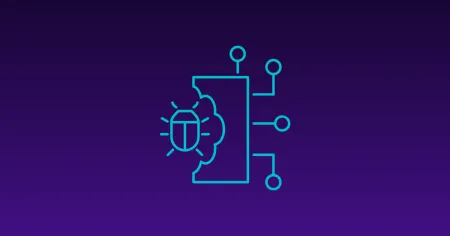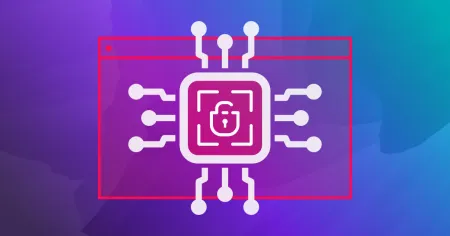Blog
Aug 5, 2024
Top Technology Sector Breaches and Threats
Discover the top 5 cyber threats targeting tech companies, learn from major data breaches, and explore how OffSec’s cybersecurity training can equip you to defend against evolving attacks. Safeguard your organization’s future.
7 min read

The technology sector is in a constant arms race against cybercriminals. With groundbreaking innovations and a wealth of sensitive data, tech companies are prime targets for hackers seeking financial gain, intellectual property theft, or simply to wreak havoc. Over the past decade, the total number of malware attacks against tech companies has increased by 87%, with 5.5 billion malware attacks deployed in 2022 alone.The consequences of a successful cyberattack can be catastrophic, ranging from financial losses and reputational damage to the compromise of critical infrastructure.
As technology continues to evolve at an unprecedented pace, so do the threats that plague it. OffSec, a pioneer in cybersecurity training and certifications, recognizes the unique challenges faced by the tech industry. We equip professionals with the practical skills and knowledge needed to not only understand the evolving threat landscape but to actively defend against it. Let’s delve into the most common cyber threats facing the tech sector, examine lessons learned from major breaches, and discover how OffSec can prepare you to safeguard your organization’s future.
- Supply Chain Attacks: These insidious attacks target the software and hardware that tech companies rely on, injecting malware or vulnerabilities into seemingly trusted components. The SolarWinds breach in 2020 is a prime example, where malicious code was inserted into widely used software, compromising thousands of organizations.
- Practical tip: Implement rigorous vendor risk management processes, conduct regular security audits of third-party software, and maintain strict control over software updates and patches.
- Data Breaches: Tech companies hold vast amounts of sensitive data, including customer information, intellectual property, and trade secrets. Data breaches can result in significant financial losses, legal liabilities, and reputational damage.
- Practical tip: Encrypt sensitive data at rest and in transit, implement strong access controls, and regularly monitor for unusual activity. Consider utilizing data loss prevention (DLP) solutions to prevent unauthorized exfiltration of data.
- Ransomware: This malicious software encrypts files and systems, holding them hostage until a ransom is paid. Ransomware attacks have become increasingly common in the tech sector, targeting companies with valuable data and a high tolerance for downtime.
- Practical tip: Regularly back up your critical data and systems to an offline location, implement robust email security filters, and train employees to identify and report suspicious emails. Consider implementing a zero-trust architecture to limit lateral movement within your network.
- Zero-Day Vulnerabilities: These are software flaws that are unknown to the software vendor and therefore have no patch available. They are highly sought after by attackers as they can be exploited before defenses can be put in place.
- Practical tip: Implement a comprehensive vulnerability management program that includes regular scanning, patching, and penetration testing. Consider utilizing threat intelligence to stay ahead of emerging threats.
- Social Engineering Attacks: Hackers manipulate and deceive employees to gain access to systems or information. This can include phishing emails, pretexting, and other forms of social manipulation.
- Practical tip: Conduct regular security awareness training for employees, emphasizing the importance of vigilance and caution when interacting with emails, messages, or unknown individuals.
Major breaches in the tech sector have not only exposed vulnerabilities but also served as a catalyst for change. Here are five of the biggest breaches that shook the industry:
- Yahoo (2013-2014): A series of breaches exposed the personal information of all 3 billion Yahoo users, making it one of the largest data breaches in history. It highlighted the need for strong password policies, encryption, and incident response planning.
- Facebook (2018): A vulnerability in Facebook’s API allowed attackers to access the personal data of 87 million users. The incident prompted changes to Facebook’s data sharing policies and raised concerns about the security of third-party applications.
- LinkedIn (2012): 117 million LinkedIn user credentials were stolen and later leaked online. This breach emphasized the importance of strong password hashing and salting, as well as the need for users to practice good password hygiene.
- Microsoft Exchange Server (2021): This widespread attack exploited vulnerabilities in Microsoft Exchange servers, affecting tens of thousands of organizations worldwide. The incident underscored the importance of timely patching, vulnerability management, and incident response.
- SolarWinds (2020): This sophisticated supply chain attack compromised the software of SolarWinds, a major IT management software provider, allowing attackers to gain access to the networks of thousands of organizations, including government agencies and Fortune 500 companies. The incident highlighted the risks associated with third-party software and the need for enhanced supply chain security.
The cybersecurity landscape is constantly evolving, and the tech industry must be prepared for the challenges that lie ahead. Here are a few trends and predictions to watch out for:
- The rise of AI-Powered attacks: As AI technology becomes more accessible, hackers will increasingly use it to create more sophisticated and targeted attacks. This could include everything from AI-generated phishing emails to deepfake videos designed to manipulate and deceive.
- The weaponization of quantum computing: Quantum computers have the potential to break current encryption algorithms, rendering many existing security measures obsolete. Tech companies will need to invest in quantum-resistant cryptography to prepare for this eventuality.
- The growing threat of cyber warfare: Nation-state actors are increasingly using cyberattacks to achieve geopolitical goals, targeting critical infrastructure and disrupting economic activity. Tech companies will need to be prepared for the possibility of being caught in the crossfire.
- The importance of resilience: In an era of constant cyber threats, the ability to bounce back from attacks quickly and effectively is crucial. Tech companies will need to invest in robust incident response plans and disaster recovery capabilities.
- The need for collaboration: Cybersecurity is not a problem that any one company can solve alone. Tech companies will need to collaborate with each other, with government agencies, and with cybersecurity experts to share information, develop best practices, and collectively defend against threats.
Cybercrime isn’t just a nuisance; it’s a multi-billion dollar problem that’s costing the tech sector dearly. In 2023, the global cost of cybercrime was estimated to be a staggering $8.15 trillion, and this figure is projected to reach $10.3 trillion annually by 2025. For tech companies, the impact goes beyond just direct financial losses.
The Toll of Cyber Attacks:
- Direct costs: These include the cost of recovering lost or stolen funds, paying ransoms, repairing or replacing damaged systems, and conducting forensic investigations.
- Indirect costs: These are often harder to quantify but can be even more significant. They include lost business opportunities, damage to reputation and brand image, decreased customer trust, and increased regulatory scrutiny.
- Hidden costs: These include the time and resources spent on incident response, employee training, and ongoing cybersecurity efforts. The emotional toll on employees and customers can also be substantial.
The Ripple Effect: Cyberattacks on tech companies don’t just affect the targeted organization; they can have a domino effect on the entire industry. A successful attack on a major cloud provider or software vendor can disrupt operations for countless businesses and consumers, potentially causing widespread economic damage.
Investing in cybersec: A necessity, not a luxury
The financial cost of cybercrime is a stark reminder that investing in cybersecurity is not optional; it’s essential for survival in the digital age. As the threat landscape continues to evolve, tech companies must prioritize cybersecurity at every level, from the boardroom to the front lines.
This includes investing in:
- People: Skilled cybersecurity professionals are in high demand, and their expertise is invaluable in protecting against cyber threats. OffSec’s training programs equip individuals with the practical skills and knowledge needed to defend against the latest threats.
- Processes: Robust security policies, procedures, and incident response plans are crucial for minimizing the impact of cyberattacks. Regularly testing and updating these processes is essential to ensure their effectiveness.
- Technology: Investing in state-of-the-art security tools, such as intrusion detection systems, firewalls, and endpoint protection solutions, can help detect and prevent attacks.
By investing in cybersecurity, tech companies can not only protect themselves from financial losses and reputational damage but also contribute to the overall stability and security of the digital ecosystem.
Keep up to date, secure your future
The tech sector desperately needs skilled cybersecurity professionals who can adapt to the ever-changing threat landscape. Invest in your career and protect your organization by exploring OffSec’s comprehensive course catalog.
Your next steps:
- Don’t be a statistic: Take the first step in securing your future and your organization’s data by exploring OffSec’s world-renowned training and certifications.
- Explore OffSec’s course catalog: Find the program that’s right for you, from beginner to advanced levels.
- Contact us for a free consultation: Let us help you create a customized cybersecurity training plan tailored to your needs and goals.
- Stay informed: Follow OffSec for the latest cybersecurity news, insights, and best practices.
The threat is real, but so is your ability to fight back. With the right training and mindset, you can be a force for good in the ongoing battle for cybersecurity in the tech industry.
Stay in the know: Become an OffSec Insider
Get the latest updates about resources, events & promotions from OffSec!
Latest from OffSec

Enterprise Security
How OSCP Holders Can Lead Their Teams to Greater Cybersecurity Resilience
Champion OSCP training in your organization to build a unified, resilient security team.
Apr 11, 2025
6 min read

Research & Tutorials
CVE-2024-57727: Path Traversal Vulnerability in SimpleHelp Web Application
CVE-2024-57727 lets attackers read sensitive files via path traversal in SimpleHelp. Learn more about how attackers exploit this flaw.
Apr 10, 2025
3 min read

Penetration Testing
AI Penetration Testing: How to Secure LLM Systems
Explore how AI penetration testing enhances LLM security, addressing unique vulnerabilities and improving cyber defenses.
Apr 3, 2025
8 min read